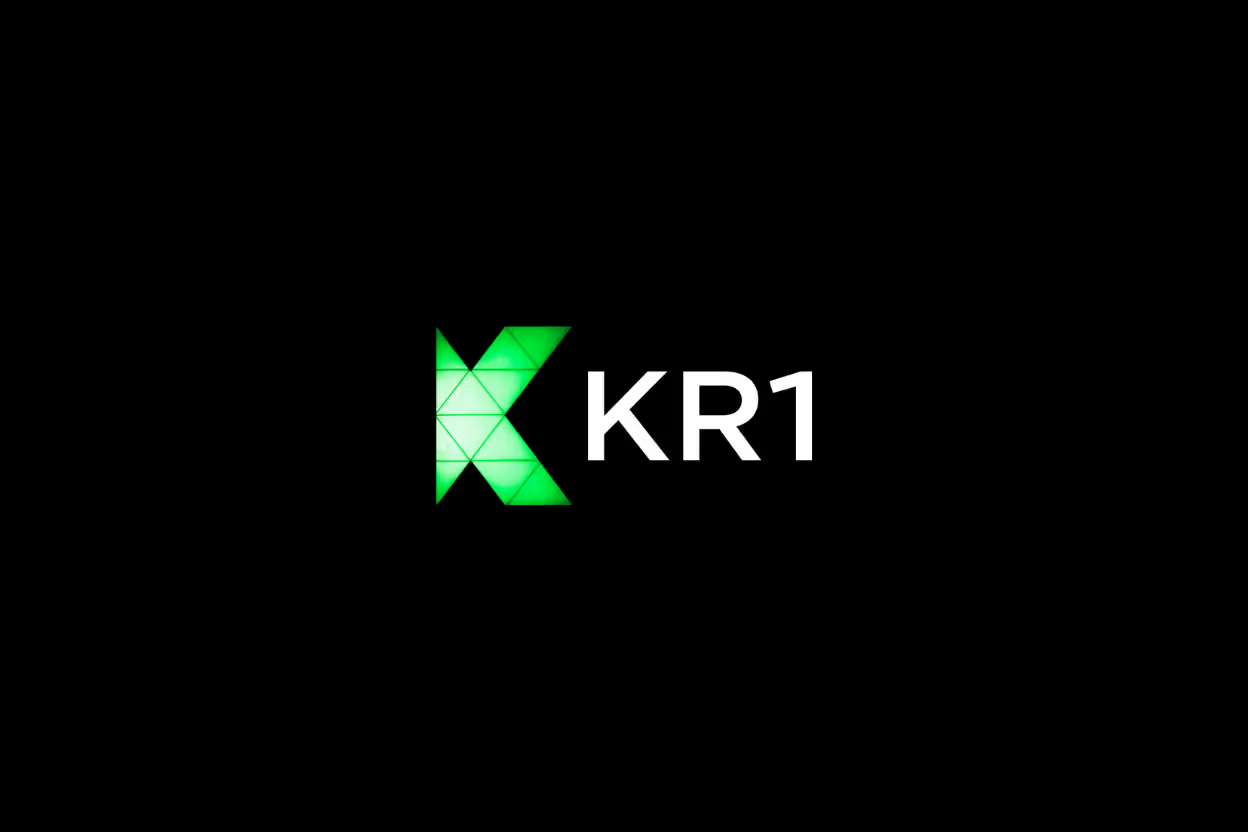Every crypto founder or investor knows that reputation isn't just a buzzword—it's a core driver behind both token price and adoption. When users and investors trust your project, they're more likely to engage, hold, and spread the word. If your token is seen as credible, its value often follows suit.
For blockchain and web3 founders, or VCs betting on the next breakout, a project's reputation can be the difference between strong traction and stalled adoption. Stakeholders want to know: Does the team deliver on promises? Are community concerns addressed quickly? Is the technology secure and transparent? When trust is high, so is perceived value, attracting more users and capital. Founders and backers who prioritize reputation often see faster adoption and steadier growth in a crowded market.
Understanding Reputation in Crypto Markets
In the crypto world, reputation works as both a shield and a magnet. It protects a project when questions arise and attracts users, capital, and partners when the outlook is positive. For founders and investors, reputation is about much more than marketing—it is about trust, credibility, and long-term confidence. Why do some token projects win early believer support, while others fade after a single controversy or security slip? The answer often comes down to how teams build, maintain, and display their reputation.
What Builds or Destroys Reputation?
Reputation in crypto is never static. The ground is always shifting, so projects must work to either build trust or fight to repair it.
Key factors that build reputation:
- Transparent teams: When founders and developers are publicly known, provide identity verification, and remain visible in community channels, people are more likely to trust the project. Projects that share true names, backgrounds, and ongoing contributions remove much of the fear of a “rug pull.”
- Open communication: Consistent updates on development status, clear responses to questions, and detailed roadmaps show commitment. Are you answering tough community questions? Are you updating your token holders in good and bad times?
- Strong security: Regular audits, bug bounty programs, and quick responses to vulnerabilities send a message that security is a top priority. This reassures investors who remember the impact of major hacks.
- Proactive issue handling: Mistakes will happen, but how a project responds matters even more than the mistake itself. Teams that own up to errors, compensate users when possible, or make public their lessons learned show maturity and resilience.
Factors that destroy or damage reputation:
- Negative events: Hacks, rug pulls, loss of funds, or any association with fraud is often a death sentence for trust. High-profile collapses like FTX or Terra Luna remind investors of the risks.
- Poor governance: If decision-making is opaque or dominated by a single entity, the wider community starts to lose faith. Lack of voting, unclear treasury spending, or ignored community input erode goodwill.
- Lack of transparency: If teams go silent during controversy, delete questions on their forums, or fail to provide regular project updates, rumors often fill the gap—and not in a good way.
- Market manipulation: Pump-and-dump schemes, insider trading, or visible wash trading can permanently damage how a project is seen.
- Regulatory concerns: Legal troubles, unclear compliance, or sanction avoidance often signal deeper problems to investors.
Every founder should ask: Is the project moving toward transparency and resilience, or drifting toward secrecy and risk? Even small missteps get amplified in crypto—reputational damage can happen overnight.
How Is Reputation Visible to the Market?
Reputation in crypto isn’t just about what projects claim; it’s about what the market can see, measure, and discuss openly.
Key mechanisms that reveal reputation include:
- On-chain actions: The blockchain acts as a public ledger. Who controls wallets? Are large token movements transparent? Are there fair vesting and lock-up timelines? Projects that make on-chain governance and finances easy to check enhance trust. Many investors track whale movements to look for early warning signs.
- Media coverage and sentiment: News articles, podcasts, and social trends shape perception, sometimes faster than technical milestones. Repeated negative headlines, heated Reddit threads, or Twitter storms can drastically move sentiment (and price) in just hours.
- Transparency reports and audits: Publicly posting independent security audits, financial reserves (proof-of-reserves), and developer commit history builds confidence. Regular updates matter. Investors and users look for evidence, not just promises.
- Peer and community feedback: Online forums like Telegram, Discord, and specialized review sites give the community a place to rate teams, share experiences, and warn others. These open, sometimes brutal, discussions let everyone spot red flags or celebrate positive actions.
- Decentralized identity and verifiable credentials: With the rise of decentralized identity (DID), founders and contributors can now prove their experience and standing without giving up full privacy. Verifiable credentials on-chain mean that past work for other respected projects carries real weight.
- Reputation systems on exchanges and platforms: Some trading venues and wallets use reputation scores or even hide tokens deemed risky. This helps casual users avoid scams and gives newcomers a chance to vet new projects quickly.
When someone new to a project wonders, “Can I trust this team?” or “What are others saying about their last security incident?” the answers are often already visible—if you know where to look. The smartest founders don’t just build quietly; they make proof of their good standing as public as possible.
The Direct Impact of Reputation on Token Price
Reputation in crypto is not just window dressing—it's a defining factor that shapes both price and trading behavior. Investors track reputation signals just as closely as they check charts or technical updates. When trust is high, a token’s price often climbs and becomes more resilient during tough markets. When that trust shatters, price spirals, liquidity dries up, and projects can collapse overnight. But what exactly causes these moves? Let’s break down how a project’s reputation either lifts prices or drags them down.
Positive Reputation and Price Premiums
A project’s good name is more than just a PR line—it’s a real, tangible asset that can help tokens trade at a premium or hold their value when others falter. Why do people pay extra for tokens with “Excellent” reputations? Because in crypto, reputation becomes a shortcut for risk assessment.
Projects with sustained positive sentiment tend to show:
- Higher trading volumes: More users are comfortable buying, selling, and holding when they trust the project’s leadership and tech.
- Greater price stability: Sudden negative swings are less common because the community is likely to hold through volatility, believing in the team’s integrity.
- Liquidity depth: Healthy markets need both buyers and sellers. Well-reputed projects attract liquidity providers who believe the market is fair and secure.
- Premium valuations: Tokens that are trusted can trade well above sector averages, especially during market downturns when skeptical investors gravitate to “safe havens” with a reputation for transparency and solid execution.
Ask yourself: Why did Ethereum tokens retain a greater share of their value during recent market dips compared to tokens plagued by controversy? Reputation signals like regular audits, and founder transparency gave traders reasons to stick around. In many ways, investors treat reputation as invisible armor—keeping price up and panic at bay.
Damaged Reputation and Price Crashes
If positive reputation is a protective moat, a tainted reputation is like a hole in the hull. Once trust is lost, the sell-off can be swift and brutal. The damage isn’t just in the price chart—liquidity disappears, exchanges may delist the token, and new buyers scatter.
Key mechanisms behind token price crashes from reputation loss include:
- Loss of liquidity: As fear spreads, market makers and liquidity providers exit, leaving traders unable to buy or sell without huge losses.
- Panic selling: Holders rush to exit, fearing a collapse. This flood of sell orders drives price down steeply, often in minutes.
- Delisting from platforms: Exchanges may respond to scandals or hacks by removing tokens to protect users from further harm. Getting relisted later is tough and rarely restores full community trust.
- Governance collapse: If a project is exposed as a “rug pull”, or if key leaders vanish, the decentralized checks and balances fail. Community confidence can be wiped out overnight.
Ask any seasoned founder: How much can one negative headline, a regulatory investigation, or security breach shave off token value? The collapse of FTX and Terra Luna are textbook examples—once trust evaporated, so did billions in value, with little warning. Reputation risk is not theoretical.
Projects that fall victim to damaging events—like rug pulls or failed launches—face real-world consequences. Not only do token holders lose money, but the entire ecosystem surrounding the token may be tainted for years. Negative events often spill over, pushing even unrelated projects with similar models into the crosshairs of nervous investors.
In short, in crypto, reputation works like a multiplier. Positive signals attract and keep capital, while negative ones can set off a chain reaction of selling, delisting, and near-total collapse. Every founder and investor should treat reputation management as a direct input into token value, not just a background task.
Reputation’s Role in Adoption and Network Growth
Reputation is the invisible currency that fuels token adoption and network expansion in crypto. When users and stakeholders perceive a project as honest and reliable, it opens the door to rapid adoption, lively communities, and credible developer engagement. But when reputation falters, trust erodes, slowing adoption to a crawl and keeping new partners at bay. Let’s break down how reputation acts as either the bridge or the roadblock for adoption, and why viral community growth almost always traces back to a project’s standing in the space.
Trust as a Barrier or Accelerant to Adoption
Building trust in crypto is no small feat. Studies show that public confidence in cryptocurrencies is rising, but about 40-60 percent of users still worry about security and safety. This isn’t just a personal concern—institutions and developers are scanning for clear signals of trust before they take the plunge.
- Security, transparency, and regulatory clarity top the list of what shapes trust. When a project is open about its code, finances, and governance, potential users feel safer stepping in.
- Perceived trust in blockchain technology, like whether transactions are visible and irreversible, helps shift the undecided into active users.
- For institutions, trust is often tied to clear legal support and rock-solid custody systems. Are major exchanges backing this token? Is the project regulated in its target region?
Industry surveys reveal that users who own tokens typically show higher trust—often because direct experience reassures them. Early adopters who have seen projects survive market swings or respond well to crises become the cheerleaders that others follow.
Key feedback from the field:
- Users list “known founders,” “open communication,” and “audited smart contracts” as main reasons for jumping in.
- Developers are more likely to build if project governance is transparent and there is confidence that bad actors will face consequences. Nobody wants to code for a scam.
- Institutional stakeholders wait for visible compliance. Even if your tech is great, lack of regulatory clarity or history of security failures will drive them away.
In short, trust moves adoption forward like a strong current. Without it, even the most promising token will struggle to grow past a small, wary crowd.
Reputation, Virality, and Community Mobilization
A good reputation doesn't just build trust—it fans the flames of viral community growth. When a token’s standing is high, online conversations light up, influencers join in, and the community starts to sell itself.
- Recognition and reward systems in Web3 communities (like digital badges or reputation points) motivate people to contribute, answer questions, and keep the energy high.
- On-chain reputation is more than marketing—it’s public proof that early adopters, developers, or leaders have actually delivered value. Others can check the data, not just the hype.
- Social currency is real. Strong projects benefit from users who want to show off their involvement, boosting network effects and speeding up growth.
But a poor reputation flips this script. Negative news, rumors about past rug pulls, or lack of transparency can freeze community energy in place. Newcomers stay silent. Developers pick other projects. Even excited users hold back from sharing, worried their friends will get burned.
Common dynamics in fast-growing communities:
- Members with high, verifiable reputation often get more influence over governance decisions—rewarding the most trusted voices.
- Healthy debate, regular technical updates, and public recognition deeds keep the community lively and attractive for newcomers.
- When reputation systems include transparent, privacy-respecting credentials, they reduce trolling, Sybil attacks, and spam, creating a positive feedback loop that draws in even more organic members.
Not all viral growth is equal, though. Communities built on hype with no reputation to back it up disappear quickly when things go sideways. Reputation works like digital gravity: the stronger it is, the more people and resources it attracts. When projects get this balance right, adoption accelerates, and organic growth takes on a life of its own.
Questions that every founder should regularly consider:
- Would you trust your own capital in your project today, given the current reputation signals?
- Is your community quick to defend your project online, or do critics dominate the conversation?
- Are developers and partners actively seeking to build on what you’ve created, or watching from the sidelines?
If you can answer these positively, your reputation is already working for you—fueling the next phase of adoption and growth.
Challenges and Best Practices for Managing Reputation
Managing reputation in the crypto space demands more than attention to public relations—it requires constant vigilance, technical integrity, and community alignment. Negative news can trigger rapid sell-offs, while unanswered rumors can damage trust that took years to build. Founders and VCs know: success isn’t just about building, but also about protecting and scaling trust. What are the toughest hurdles, and which best practices help projects build credibility and protect their token’s standing?
Building Sustainable Reputation Systems: Models and Tactics
Sustainable reputation systems do more than monitor social sentiment—they embed trust, feedback, and transparency into a project’s core. Projects that treat reputation as a product feature (not just a communications task) tend to weather storms better, inspire greater loyalty, and drive long-term adoption.
Key models for sustainable reputation systems include:
- Dual-token systems: Some projects split reputation metrics using two tokens or assets:
- Effort-based points reward consistent participation, contribution, or community support, often non-transferable to prevent manipulation.
- Transferable tokens act as tradeable proof of trust or standing, aligning financial stakes with social behavior.
- By using this approach, teams prevent one bad actor from buying influence and offer lasting incentives for long-term supporters.
- Feedback loops and on-chain governance: Real-time systems for peer reviews, staking-based feedback, and public ratings help projects learn from their community. When managed well:
- Feedback builds user agency—members know their voices shape decisions.
- Automated negative feedback responses (like slashing or muting privileges) deter sybil attacks or fake endorsements.
- Transparent reporting: Open access to audit results, team wallets, voting records, and code changes provides visible proof that the team operates honestly. Regular update reports, open AMAs, and post-mortem disclosures bring clarity and foster trust—especially when things go wrong.
- Aligning incentives: Aligning core team and community incentives, for example with vested tokens, bug bounties, or contributor rewards, keeps everyone’s interests connected. This discourages short-term thinking and “pump and dump” behavior.
- Technical safeguards: Using smart contracts for dispute resolution, counter-ratings, and tamper-proof transaction histories prevents reputation scores from being gamed or corrupted.
For blockchain founders, a sustainable reputation system isn’t just a “nice to have.” It’s essential armor. Consider reader questions that pop up in every serious crypto community:
- “How can token holders trust the feedback loop won’t be spammed or manipulated?”
- “If reputation points are transferable, what’s in place to prevent bad actors from accumulating undue influence?”
- “Can the community see and verify the team’s on-chain activity and responses to incidents?”
The best systems answer these questions before they’re even asked—by design.
Best Practices for Sustainable Trust:
Projects thriving on trust share habits that others can learn from. Here’s what top teams are doing, according to recent industry research and crypto brand experts:
- Real-time monitoring: Set alerts for mentions across Twitter, Reddit, Discord, and blockchain analytics platforms. Move quickly on rumors or questions.
- Structured response plans: Designate a team for crisis communication with templates for common incidents (security, hacks, regulatory questions).
- Open developer engagement: Host frequent AMAs and technical updates to quiet uncertainty and show progress.
- Publish accessible evidence: Make audits, codebase updates, and team wallets easy to find and verify.
- Reward honest participation: Use effort-based reputation rewards to highlight genuine contributors, not just the loudest or most visible.
- AI-powered tracking: Use sentiment analysis and NLP to spot negative trends before they go viral.
In a decentralized world, reputation is built in the open. Teams need to treat it as one of their project’s core assets—visible, structured, and backed by accountable actions—if they want their tokens and communities to grow and stand out.
Key Questions Founders and Investors Should Ask
Understanding the right questions to ask about reputation can change the outcome for both founders and investors in crypto. In a world where perception equals value, questions about reputation must go deeper than surface-level due diligence. Solid answers build trust, root out red flags, and keep projects on a path toward adoption and price strength.
Reputation Foundations
Reputation underpins token success, yet how can anyone be sure it is built to last? Both founders and backers should focus on what anchors a project's standing in the space.
- Is the project team openly identified and verifiable? Anonymous founders may be common in crypto, but transparent leadership builds trust and credibility from the start.
- What is the track record for delivery and communication? Has the team met past milestones with transparency, even when things went sideways? How do they handle public questions on social or community channels?
- Are security policies and audits in place? Asking about third-party audits, bug bounties, and details around asset custody reveals how committed the project is to protecting users and the treasury.
A reader might wonder, “How can I tell if a project's reputation is real or just marketing hype?” Consistent, verifiable communication and open code or audit trails usually provide strong answers.
Regulatory and Security Due Diligence
Regulatory scrutiny and security incidents can sink even promising projects. Tough questions help everyone spot warning signs before problems spiral.
- What is the regulatory status of the token and project? Insist on clear statements about jurisdiction, compliance, and ongoing legal reviews. If the team avoids specifics or has unresolved regulatory issues, risks multiply overnight.
- What security steps have been taken against hacks or fraud? Look for recent third-party audits, transparent bug bounty results, and detailed disclosures about custody procedures. Punishing security flaws or failure to disclose past incidents will eventually hurt the token price.
- How does the project handle compliance (KYC/AML, asset custody, data privacy)? Is there a clear strategy for dealing with authorities and protecting user data? Unclear answers can kill confidence.
Prompt: Do you know what measures your project would follow if regulators or hackers targeted it tomorrow?
Tokenomics and Incentive Alignment
Token price and adoption are fragile if there’s no real alignment between founders, investors, and the community. Tokenomics directly reflect reputation.
- How is token supply managed and distributed? Projects should offer clear lockup periods for insiders, transparent vesting schedules, and avoid high concentration among founders. If a small group controls most of the tokens, reputation and price become easy to manipulate or crash.
- What incentives keep users engaged for the long term? Are early adopters, developers, and contributors rewarded beyond hype? Look for dual-token models, reputation point systems, or other transparent mechanisms to foster real engagement.
- What is the plan for handling community feedback and updating incentive structures? Adjustable rules and regular engagement show a willingness to improve over time, instead of leaving the community in the dark.
Ask yourself, “Would I trust this project’s incentives to remain fair if success arrives—or if a hard challenge hits?” If the incentives are unclear, reputation will suffer, and so will price and adoption.
Competitive Edge and Network Effects
A strong reputation sets projects apart in crowded markets, but only if teams are ready for tough conversations.
- What makes this project different from competitors—and can that difference be sustained? Have the founders articulated clear, lasting advantages? Is there technology or strategy that others cannot easily copy?
- How much of community and network value is real vs. manufactured? Independent mentions, consistent developer activity, and real-world integrations count more than “shilled” social buzz.
- What are the biggest reputation risks ahead, and how does the team plan to overcome them? The best leaders have tough conversations early, flag likely pitfalls, and draft action plans for crises.
A thoughtful reader might ask, “How will this project maintain its rep if the market shifts, or if a competitor launches a similar offering?”
Due Diligence for Long-Term Confidence
Building confidence in a token is not a one-time act—it's ongoing. Founders and investors alike need routines, not just flashy answers, to secure their project’s future.
- Are there clear frameworks for monitoring and reporting on reputation? Does the project publish regular transparency reports, and are they easy for anyone to verify?
- What history does the leadership or team have with past projects, especially around transparency and crisis management? Past actions almost always predict future behavior.
- How quickly does the team respond to setbacks or negative headlines? Speed, honesty, and engagement matter more than spin.
Prompt: Are you prepared to answer tough questions under pressure, when your project’s reputation is on the line?
Focusing on these questions drives real impact. When teams and investors keep reputation front and center, the token price and adoption curve usually follow suit. Young projects thrive when they get these basics right.
Conclusion
Reputation is now an essential layer in crypto’s value chain. Projects with clear accountability, transparent communication, and strong security earn trust, lift token price, and gain adoption even in a crowded market. As 2025 unfolds, the market rewards projects that show real integrity—and it punishes those that fall short.
For founders, focusing on reputation is not optional. It’s a daily practice that shapes how communities grow, how investors rate value, and how partners approach your roadmap. For investors, careful attention to a project’s standing can mean the difference between consistent returns and costly mistakes.
Is your token positioned to inspire trust in both retail and institutional buyers? Are your transparency practices strong enough for the coming regulatory waves? The projects that answer “yes” will set the standard for the next wave of crypto growth.
Thank you for reading. If you lead, invest in, or contribute to crypto initiatives, let reputation be your north star. Share your questions or lessons on trust in the comments to keep this conversation moving forward.









